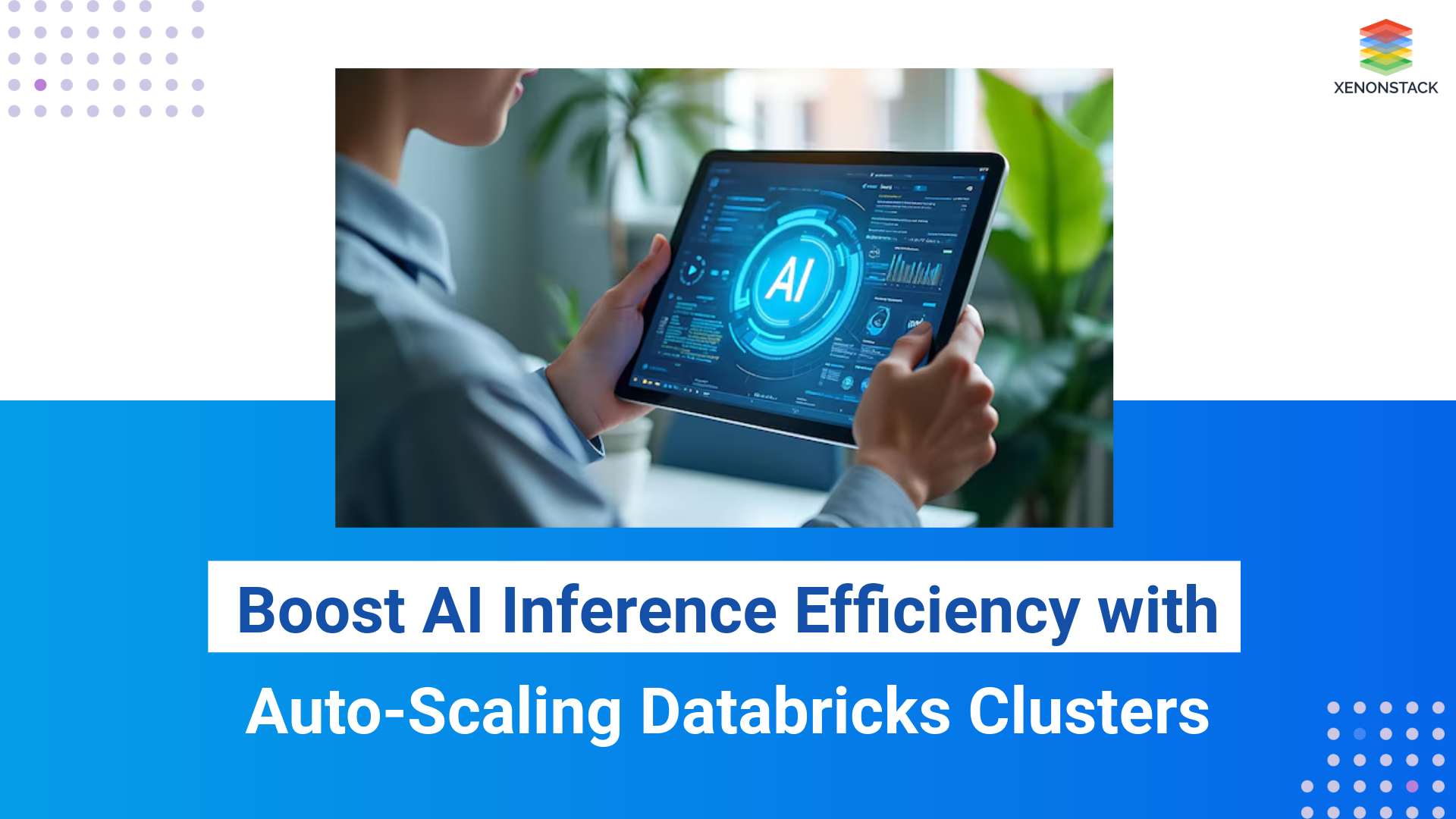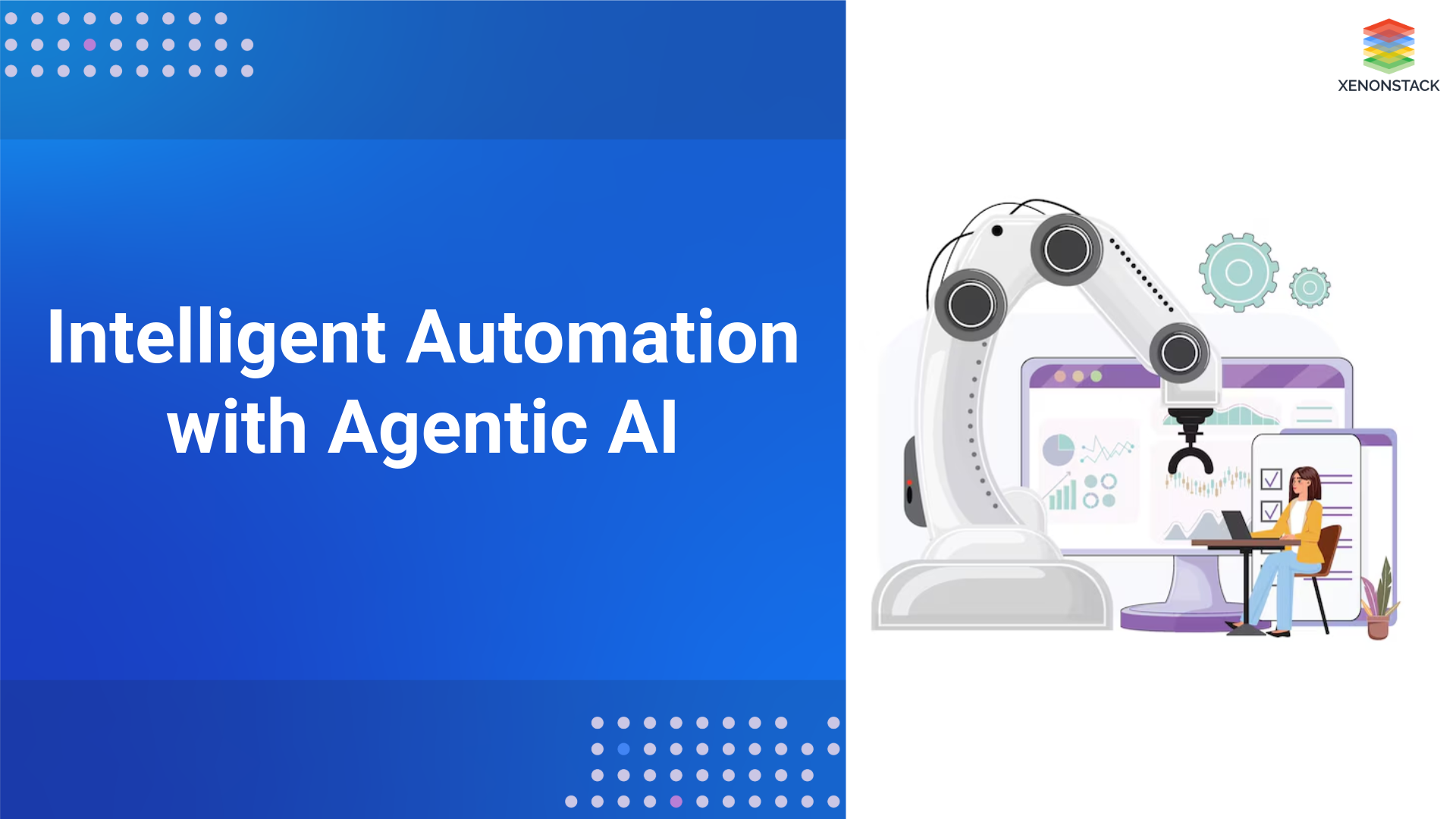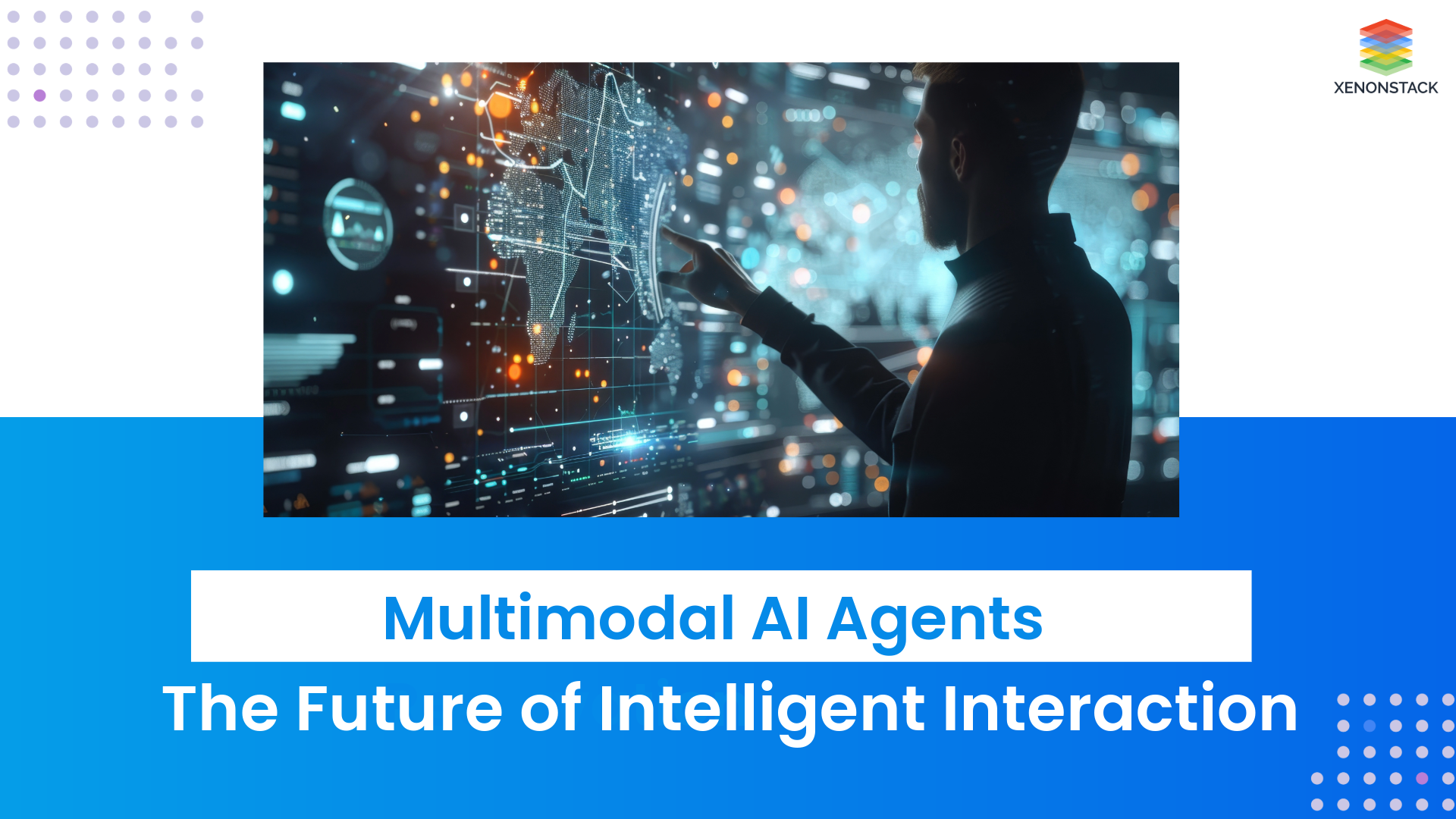In today's hyperconnected world, people spend most of their time interacting with mobile gadgets and electronic devices. Forward-thinking organisations and developers recognise the transformative potential of deploying AI at the edge to enable autonomous operations, provide efficient and immediate services to customers, and drive revenue growth through distributed intelligence.
What is Edge AI in Autonomous Systems?
Edge AI represents the convergence of Edge Computing and Artificial Intelligence, bringing intelligent decision-making capabilities directly to the devices where data originates. When deploying machine learning models at the edge, there's no need to send API requests or real-time data to cloud servers for each inference—the intelligence resides within the device itself, enabling truly autonomous operations.
This distributed approach to intelligence brings computation and data storage closer to the source, eliminating reliance on centralized processing. Edge AI allows machine learning algorithms to run locally on hardware devices, processing data created on the device without requiring constant connectivity. For example, when someone asks Siri to make a call, requests Alexa to play music, or needs a roadmap on Google Maps, Edge AI enables processing within 400 milliseconds, facilitating real-time autonomous responses.
Importance of Edge AI for Autonomous Systems
Edge AI provides several advantages for autonomous systems, such as:
-
Reduce latency and response times: Edge AI processes data on edge devices, eliminating the need for data to be sent to the cloud to be processed. This reduces latency and allows autonomous systems to respond more quickly to environmental changes.
-
Reduce privacy and security risks: Edge AI stores data locally at the edge device, reducing the chance of data breaches and unauthorized access.
-
Reduce bandwidth requirements: By using Edge AI, autonomous systems can reduce the amount of data they need to transmit over the network, resulting in lower bandwidth costs and improved network performance.
-
Decreased network outages and fault tolerance: An Edge AI system is less likely to fail due to network outages or other disruptions, as it can continue to operate even if a connection to the cloud is lost.
The Evolution Toward Distributed Intelligence
 Fig 1: Distributed Intelligence Evolution
Fig 1: Distributed Intelligence EvolutionFrom Centralized to Distributed Computing
The journey toward distributed intelligence began with the advancement of both edge computing and artificial intelligence. While the foundational methods of AI were developed over half a century ago, focusing primarily on symbolic reasoning and simple algorithms, the explosion of personal computing and internet connectivity toward the end of the 20th century paved the way for more sophisticated AI models.
The Need for Edge Autonomy
Challenges posed by centralized cloud computing led to the evolution of the edge computing paradigm in the 1990s. Organizations recognized that decisions made closer to the data source delivered better outcomes in terms of response time, bandwidth utilization, and security. As IoT devices proliferated in the early 2000s, the need for localized decision-making became apparent, driving the integration of AI technologies with edge computing.
The Rise of Agentic AI at the Edge
The true revolution came with the development of machine learning models, particularly deep learning in the 2010s, which enabled the deployment of sophisticated AI capabilities on resource-constrained edge devices. This breakthrough allowed businesses to integrate machine learning at the edge—in cameras, sensors, or mobile phones—creating autonomous agents capable of making decisions without constant cloud connectivity. This integration has spawned numerous applications from self-driving cars to smart homes, fundamentally changing how autonomous systems operate.
Components of Edge AI for Autonomous Operations
Edge Devices
-
Edge devices are physical devices that power the Edge AI model. They typically have low processing power and limited memory but are small, low-power, and inexpensive. Common edge devices include embedded systems, microcontrollers, and FPGAS.
-
Edge sensors collect environmental data, such as temperatures, pressures, vibrations, images, etc. They can be integrated directly into edge devices or connected via wired and wireless interfaces.
AI Algorithms and Models
-
Edge AI models typically use machine learning (ML) or deep learning (DL) algorithms to learn from data and make predictions or decisions.
-
Deep learning algorithms are a subset of machine learning that uses artificial neural networks (ANNS) to learn complex patterns from data.
-
After an edge device has been trained, an AI model can be deployed to it. The edge device then uses the model to process the data and make real-time decisions.
Edge device connectivity and communication
Advancements Over Time
-
Hardware Developments - Self-learning systems have been made possible over the last decade by substantial improvements in the availability of hardware. Today, giants like Intel and NVIDIA have released specific chips or just the brain drop for AI purposes, such as the Movidius Neural Compute Stick of Intel or the Jetson of NVIDIA. These hardware solutions help counter power-hungry AI and let AI run efficiently on edge devices.
-
Software Frameworks - More to it, developing and implementing Edge AI has become easier due to the release of software frameworks for such applications. TensorFlow Lite, PyTorch Mobile and OpenVINO are frameworks that help developers have all the means to build and deploy AI models efficiently at the edge.
-
Connectivity Solutions - 5G technology has further improved connectivity, improving the capability of Edge AI. This connection enables edge devices to integrate and use cloud resources when necessary, but they remain mostly focused on local computations.
Edge AI Architecture for Autonomous Operations
A robust Edge AI architecture for autonomous operations consists of three integrated layers:
 Figure 2: Edge AI Architecture for Autonomous Operations
Figure 2: Edge AI Architecture for Autonomous OperationsIoT Sensing Layer
The IoT layer forms the sensing foundation for autonomous operations, embedded in devices ranging from mobile gadgets and smart vehicles to industrial sensors, actuators, and controllers. These components monitor objects, services, human activities, and operations in real-time, using wireless standards like WiFi to connect and facilitate AI-driven autonomous decision-making.
Edge Intelligence Layer
The Edge layer serves as the command centre of the architecture, where edge computing and intelligence converge to enable autonomous operations. This layer analyses data streams, manages computing tasks, orchestrates policy execution, and monitors technological resources. It processes and filters data from the Iot layer in real-time, ensuring data privacy and enabling on-device analytics that drive autonomous decision-making without cloud dependency.
Business Solution Layer
The Business Solution layer integrates autonomous operations with business applications, authentication systems, and service orchestration. It incorporates edge machine learning, AI frameworks, and data analytics to provide advanced functionalities for autonomous systems. This layer handles complex processing workloads, visualises operational data, deploys AI-driven solutions, and facilitates AI democratisation for enhanced autonomous operations across the organisation.
A complete Edge AI architecture for autonomous operations typically includes:
-
Cloud Orchestration Platform: Provides oversight, software updates, and model maintenance through periodic checks. Performance metrics and model scores are transmitted to cloud servers when necessary, with updated models and configurations pushed back to edge devices to enhance autonomous capabilities.
-
Autonomous Edge Devices: Deployed locally to collect data and perform
real-time analysis without constant connectivity. These devices function independently but continuously connect to cloud platforms for software updates and model enhancements, maintaining their autonomous operation capabilities.
-
Operational Environment: The physical or digital environment equipped with edge devices that provide sensor readings, video streams, or other input data. Operators and autonomous systems use real-time inferences to make decisions and take actions without human intervention.
Edge AI Devices and Platforms for Autonomous Systems
Autonomous Edge Devices
Key devices enabling autonomous Edge AI operations include:
-
Raspberry Pi for prototyping autonomous systems
-
Lenovo ThinkEdge for enterprise-grade autonomous operations
-
Advantech IPC-200 for industrial autonomous applications
-
Google Coral boards for ML-accelerated autonomous functions
-
NVIDIA Jetson Series for sophisticated autonomous computing
These devices typically feature 64-bit processors with 1-4GB RAM (upgradable for more demanding autonomous applications), SD-card storage, HDMI connectivity, power management, and networking capabilities. They work with specialized input/output peripherals like cameras and sensors to capture environmental data for autonomous decision-making.
Autonomous Edge Platforms
Major platforms supporting autonomous Edge AI operations include:
-
AWS Greengrass: An open-source platform for managing autonomous IoT edge devices, providing services for building, deploying, and managing edge models that enable autonomous operation.
-
Azure IoT Edge: Microsoft's service offering cloud-managed autonomous edge capabilities, allowing Azure services and packages to run on edge devices with minimal connectivity.
-
Google Distributed Cloud Edge: Delivers Google cloud services on edge devices, providing fully managed hardware and software solutions for real-time autonomous data analytics using Google's AI capabilities.
Benefits of Edge AI for Autonomous Operations
Edge AI delivers significant advantages for autonomous operations across various domains:
Autonomous Intelligence
Unlike traditional applications that only respond to anticipated inputs, Edge AI systems can handle unexpected scenarios and adapt to changing conditions. AI neural networks are trained to address types of questions rather than specific questions, enabling autonomous systems to process diverse inputs like text, speech, and visual data without human intervention.
Real-time Autonomous Decision-Making
Autonomous systems powered by Edge AI respond to environmental stimuli in real-time by analyzing data locally rather than waiting for cloud processing. This eliminates latency issues that could compromise autonomous operations, enabling split-second decisions crucial for applications like autonomous vehicles or industrial safety systems.
Operational Cost Efficiency
By processing data at the edge, autonomous systems require significantly less bandwidth, dramatically reducing network costs. This efficiency extends to power consumption and computational resources, making autonomous operations more sustainable and economically viable.
Enhanced Security and Privacy
Autonomous Edge AI systems analyze sensitive information locally without exposing it to external networks, significantly enhancing privacy for applications involving personal data like biometrics, voice, or medical information. This local processing approach simplifies compliance with data protection regulations while maintaining robust autonomous functionality.
Continuous Autonomous Operation
Decentralized processing and offline capabilities make autonomous Edge AI systems highly resilient, functioning reliably without constant internet connectivity. This improves availability for mission-critical autonomous applications like industrial automation, healthcare monitoring, or transportation systems, ensuring continuous operation regardless of network conditions.
Self-Improving Autonomous Capabilities
Edge AI models become more accurate with exposure to new data. When autonomous systems encounter unfamiliar scenarios they can't process reliably, they can flag these instances for model retraining, leading to continuous improvement. The longer an autonomous Edge AI system operates, the more robust and adaptable it becomes.
Key Considerations for Implementing Edge AI
Data collection and preparation
-
Data collection and preparation for Edge AI requires high-quality data. To train effective AI models, you need to collect data relevant to the task the AI model will perform.
-
Data must be accurate and free from errors.
-
Data diversity must be representative of a wide range of situations and scenarios.
-
Once you have collected your data, you must prepare it for training. This may include cleaning, preprocessing, and extracting features from your data.
Model selection and training
What is model training?
Model training is the iterative process of fine-tuning the hyperparameters of the model and evaluating the model’s performance. The aim of model training is for the model to be able to generalize to new data and to be able to perform well on the task at hand.
Deploy and Optimize
-
After training an AI model, you can deploy it to your edge device. But before deploying your model, you need to optimize it for efficiency and performance. You can do this by using techniques like model compression, model quantization, or pruning.
Applications of Edge AI in Autonomous Systems
Autonomous Surveillance and Monitoring
Traditional surveillance systems streamed raw video to cloud servers, creating bandwidth bottlenecks and processing delays. With autonomous Edge AI, smart cameras independently process captured images to detect objects, track movement, and identify suspicious activities without cloud dependency. This reduces bandwidth usage, eliminates latency, and enhances security while enabling autonomous monitoring at scale.
Autonomous security benefits include:
-
Real-time threat detection without human monitoring
-
Minimal bandwidth consumption through local processing
-
Enhanced privacy through on-device data handling
-
Resilience against network attacks and outages
-
Automated security responses and scalable coverage
Autonomous Smart Assistants
Voice-activated devices like Google Home, Amazon Alexa, and Apple Siri demonstrate Edge AI's capabilities in creating autonomous digital assistants. These systems use on-device processing for wake word detection and initial command parsing, sending data to cloud services only when necessary for complex processing. This hybrid approach enables quick response times while maintaining sophisticated functionality.
Autonomous Vehicles
Autonomous vehicles represent one of the most demanding applications for Edge AI, requiring immediate sensor data processing without cloud dependency. Edge AI enables real-time recognition of other vehicles, traffic signs, pedestrians, and road conditions, facilitating split-second autonomous decisions essential for safe operation. With constant sensor data streams analyzed at millisecond intervals, Edge AI provides the infrastructure needed for reliable autonomous transportation.
Autonomous Healthcare Systems
In healthcare, autonomous Edge AI enables continuous patient monitoring, detection of medical anomalies, and support for clinical decision-making. Local processing allows for faster responses during emergencies, improved patient care, and enhanced privacy for sensitive medical data. Autonomous monitoring can detect cardiovascular irregularities, fractures, and neurological symptoms, helping healthcare providers intervene earlier and more effectively.
Edge AI also enables wearable health monitors to track vital signs and detect abnormalities without constant connectivity autonomously, ensuring timely interventions while maintaining patient privacy through on-device processing.
Autonomous Industrial Operations (IIoT)
Autonomous edge AI systems are transforming the future of manufacturing by enabling automated quality inspection, predictive maintenance, and robotic assembly. By processing machine data streams in real time, autonomous Edge AI systems monitor manufacturing processes, control environmental conditions, and optimize resource utilization without human intervention.
These systems can predict equipment failures through continuous sensor data analysis, enabling proactive maintenance that increases productivity and reduces downtime in autonomous industrial environments.
Autonomous Smart Cities
Edge AI applications are creating more responsive and efficient urban environments through autonomous systems that monitor traffic, air quality, energy usage, and public safety. AI-powered sensors and cameras autonomously adjust traffic signal timing based on real-time conditions, optimize energy distribution, and enhance emergency response without constant human oversight.
For example, Arizona's Maricopa County Department of Transportation implemented an autonomous traffic management system using NVIDIA's technology to reduce congestion through real-time traffic flow analysis and autonomous signal control.
 Major Players in Edge AI Development
Major Players in Edge AI Development
-
Intel: Intel leads in Edge AI with solutions like Movidius Neural Compute Stick and OpenVINO, optimizing models for edge devices. It partners on smart city and Industry 4.0 solutions.
-
TSMC: TSMC is key in edge AI chip production and energy-efficient processors. It uses NVIDIA’s cuLitho for advanced semiconductor manufacturing.
-
Samsung: Samsung uses Edge AI in electronics like smartphones and wearables, focusing on user privacy. Its AI research aims to advance Edge AI.
-
NVIDIA: Jetson platform drives Edge AI in industries like automotive and robotics, improving efficiency and safety.
-
Google: Google uses TensorFlow Lite for Edge AI and develops applications for sectors like healthcare and smart devices.
-
Microsoft: Azure IoT Edge integrates AI with IoT devices for enhanced decision-making.
-
IBM: IBM’s Watson division offers Edge AI solutions for manufacturing and healthcare to optimize operations.
Agentic AI: The Future of Autonomous Edge Intelligence
From Reactive to Proactive Autonomous Systems
The next evolution in Edge AI involves the development of truly agentic systems capable of not just responding to stimuli but proactively pursuing goals, planning actions, and learning from experiences without human intervention. These autonomous agents will coordinate their activities with other agents, forming distributed intelligence networks that collectively solve complex problems.
Multi-Agent Collaborative Systems
Future autonomous Edge AI systems will operate as part of larger multi-agent ecosystems, with specialized agents handling different aspects of autonomous operations while sharing insights and coordinating responses. This collaborative approach will enable more sophisticated autonomous behaviours than any single agent could achieve, creating emergent intelligence across distributed systems.
Continuous Learning and Adaptation
Agentic Edge AI will feature enhanced capabilities for on-device learning, allowing autonomous systems to adapt to their specific operational environments without requiring complete model retraining. This continuous learning approach will make autonomous systems more resilient to changing conditions and increasingly effective over time through accumulated operational experience.
Enhanced Decision Autonomy
Next-generation Edge AI agents will have greater decision-making authority, operating under high-level objectives rather than prescriptive rules. This shift will enable autonomous systems to handle novel situations more effectively, finding innovative solutions to unforeseen challenges while maintaining alignment with their core operational goals.
Challenges and Solutions for Autonomous Edge AI
Computational Constraints
Distributed Data Coordination
Security and Trust in Autonomous Systems
The Future of Autonomous Systems with Edge AI
The integration of Edge AI with agentic capabilities is driving a transformative shift in how we approach distributed intelligence. By processing data locally, Edge AI facilitates real-time decision-making, enhances privacy, reduces operational costs, and operates without the need for constant connectivity—key features for autonomous systems.
Sectors such as surveillance, transportation, healthcare, and manufacturing are benefiting from the synergy between Edge AI and agentic AI, enabling increasingly sophisticated autonomous operations. As hardware and algorithms continue to evolve, these systems will tackle more complex tasks with minimal human intervention.
The future lies in collaborative multi-agent systems, where edge processing and advanced AI models work together to solve operational challenges. These systems will evolve from being reactive to proactive, reshaping industries. The integration of Edge AI with agentic AI is not only a technological advancement but a new paradigm in intelligence distribution—empowering autonomous decision-making at the point of action while ensuring coordinated efforts toward shared goals, laying the foundation for the next generation of intelligent systems.

Major Players in Edge AI Development
 Fig 1: Distributed Intelligence Evolution
Fig 1: Distributed Intelligence Evolution






